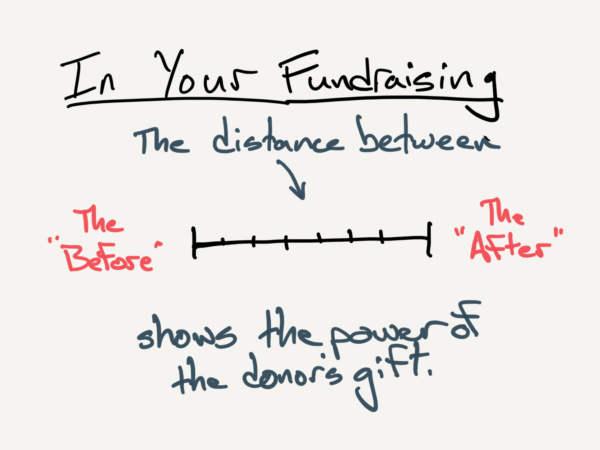We created our first appeal for a client a couple of months ago. It was a success, and here’s what one member of their team said as we talked about how the appeal performed:
“It really stuck out. It was different.”
I thought, “Great!”
Because the best-performing fundraising sticks out from:
- The other fundraising in a donor’s mailbox and inbox that day, and
- From the organization’s own fundraising
Why you want your letter to stand out in your donor’s mailbox is obvious: your letter is in competition with everything else your donor receives that day.
But why you want to occasionally stand out from your own fundraising is more subtle.
Here’s what can happen: when an organization sends out fundraising that always looks the same, donors begin to identify it as “fundraising” and don’t open it. (This is the explanation we came up with at the agency I was working for 20 years ago when we noticed that organizations that used similar outer envelopes multiple times in a row tended to raise less and less money.)
Here’s a quick example: in the 80’s or 90’s an organization figured out they could use small brown paper lunch bags as envelopes. They would put the appeal/reply card/reply envelope in the bag, seal the bag, stamp and address it, and send it out. Those appeals raised far more money than usual.
For a while.
Within a year or two, those packages started raising less and less money. Pretty soon they started performing like appeals sent in a regular (and less expensive!) #10 envelope.
Why? People figured it out. They knew what it was. They didn’t open the bags more than they opened anything else. They lost interest.
All this tells us is that it’s good to stand out… and that sooner or later you’re going to need to change again.
This is why organizations will use a mix of different types of envelopes and colors over the years. And will use different messages over the course of a year. (This is just one of the reasons for the approach of Asking strongly in appeal letters, then Reporting back to donors in newsletters that look and sound different; the packages and messages you send to donors regularly look and sound different.)
You can and should create “fundraising assets” that you can use again and again. For instance, you might send a “gift catalog” every October that you only tweak slightly from year to year. But you shouldn’t send the same type of message, on the same type of letterhead, in the same type of envelope again and again and again.
Show me an organization whose mail all looks basically the same, with the same type of messaging, and I’ll show you an organization that’s leaving a lot of money on the table.









